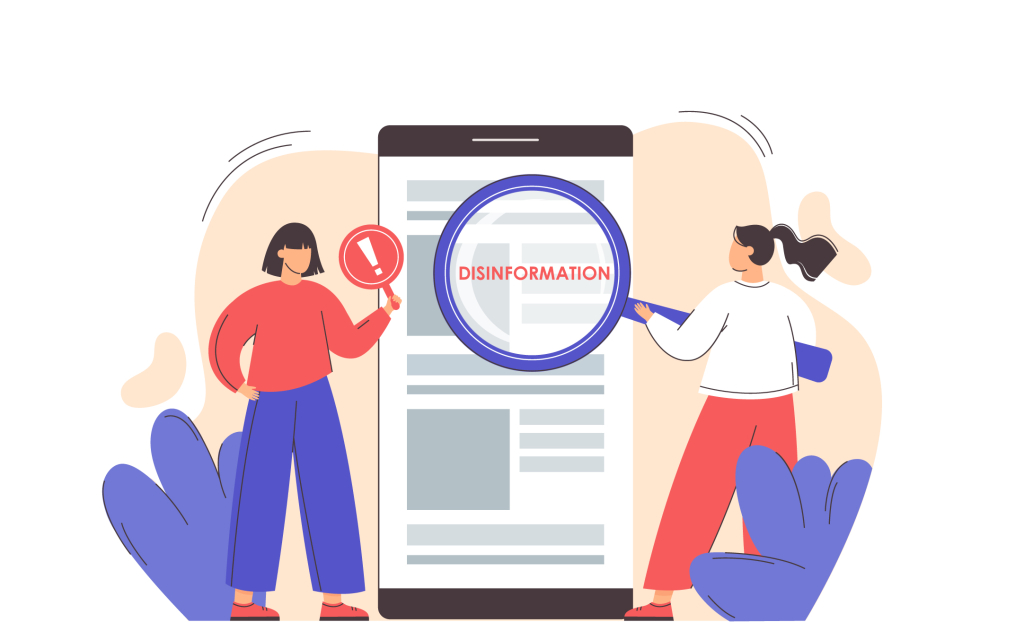Media Literacy is a Vaccine Against Disinformation About Roma
23 May 2023

Digitalisation is taking over the world and it is rapidly becoming a fundamental right for everyone to access and enjoy. We are not only exposed to countless amounts of information and data that require digital skills to access, but we also need an increased level of knowledge to access it proficiently. The rapid spread of disinformation and misinformation has become a global challenge, and it is up to all of us to take action. Companies such as Google and its subsidiaries have already implemented policies to remove or reduce the visibility of content that violates its policies, including false information related to COVID-19 and election integrity. Google also partners with third-party fact-checkers to review and rate the accuracy of content on its platforms.
This increased reliance on online activity raises important questions: Are users informed and skilled enough to engage critically with information online? And what happens if disinformation or misinformation targets vulnerable groups, such as Roma?
Media and Information Literacy
Media and Information Literacy (MIL) plays a crucial role in this respect. MIL refers to the ability to access, evaluate, and effectively use various types of media and information. In today’s world users are bombarded with information from multiple sources, such as social media, news outlets, and advertising. Without the skills to critically analyse and assess this information, it's easy to be misled or influenced by false or biased content. MIL is important because it helps people to navigate this information overload and make informed decisions based on reliable and accurate sources. It also helps people become more responsible consumers and producers of media content. MIL skills include; understanding how to verify the credibility of sources, recognising bias and propaganda, and knowing how to use media to express oneself and participate in civic life. Overall, MIL is an essential set of skills for anyone who wants to be an informed and active member of society in the digital age.
Roma and Real-World Violence
For Roma, the impact of disinformation is especially concerning, as they are often targeted by misinformation campaigns that perpetuate harmful stereotypes and contribute to discrimination. In Albania, the quality and accuracy of the information concerning Roma is often unsatisfactory, with misleading titles, misinformation, and poor-quality content. Such representations in media often do reflect existing public opinions and have strengthened stereotypes. Not long ago, in Albania’s neighbouring country, Greece, the murder of a 16-year-old Romani boy by a police officer was all over the Greek media and beyond. The Romani boy was killed by police after not paying a 20 Euro gas bill. A series of protests occurred over the following days, and ambiguous and sensationalist headlines were replicated in the Albanian news. By focusing on how Roma were responsible for violent protests, rather than the murder of the Romani boy by police, these headlines risked inciting and stoking real world hatred against the Romani community.
The above is an example of media journalism failing to consider the impact headlines and content can have on the lives of vulnerable groups such as Roma. History has shown that major racist violence can be traced back to hate speech and malicious propaganda against individuals or groups of people: just look at the genocides fueled by racist sentiment and fascist ideologies in Europe during World War II. Nowadays, it remains easy for online hate to translate into violent real-world actions that, once sparked, can bring devastating consequences.
MIL and Romani communities
MIL is a crucial tool in combatting the spread of misinformation and hatred online, however this can prove difficult for Roma, who often lack access to technology and basic education or literacy. When it comes to the digital world, Romani communities face interconnected issues: they experience more online (and offline) discrimination because they're Roma, and due to structural discrimination, they are often at a disadvantage when it comes to access to technology and education. Systemic antigypsyism means vulnerable Romani communities not only face more online hate, but are often unable to engage effectively with online media in order to fight it. In this way, non-formal education provides a critical opportunity to equip Romani people, particularly Romani youth, with the skills they need to navigate the complex world of information and media. By promoting MIL in these settings, Romani people would develop the critical thinking skills to recognise and challenge misinformation and stereotypical depictions of Roma.

So, what can we do to promote MIL and youth engagement in the fight against misinformation among Romani communities?
Encourage Romani youth to evaluate and question the information they encounter online by promoting media literacy and education in informal settings such as community workshops and after-school programs in Romani communities. Providing MIL education programs in community centres, libraries, and other non-formal settings can also help create spaces to discuss the importance of media literacy skills and equip individuals with the knowledge and skills to evaluate information from various sources critically.
At the same time, those members of communities who are most deprived of education should be able to access trustworthy information in the Roma language through accessible, needs-tailored infrastructure such as traditional media. Finally, community-based media literacy initiatives would be handy to encourage the production of content informed by the experience and voice of the Romani community itself. Such initiatives might include; citizen journalism workshops and media literacy campaigns.
Media and Information Literacy is essential for developing an informed, engaged, and responsible society. Providing access to technology and the ability to engage with digital content to marginalised groups would not only open up the digital world to them but take their stance and voice into account, emphasising their own position and contributing to framing their own narrative. Crucially, involving young Romani people in the fight against disinformation is a social responsibility and an opportunity. Young people are digital natives and often possess a unique understanding of technology and media. Significant progress is possible through promoting MIL in informal education and engaging young Romani people in this fight.
This article was written by one of our Roma Rights Defenders as part of the ‘ERRC Newsroom’ project, bringing together Romani and non-Romani activists with an interest in journalism and human rights. The project provides volunteers with mentoring, copy-editing, training, and opportunities to pitch articles on Roma Rights issues for publication on ERRC News. If you are interested in pitching an article to ERRC News, or joining this volunteer project, send an email to news@errc.org.




